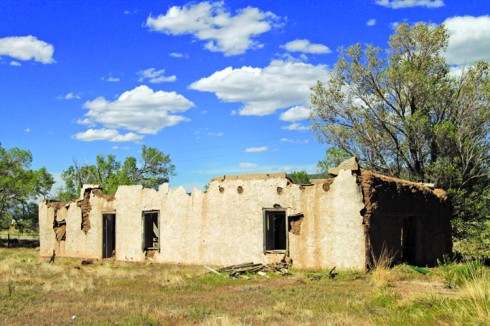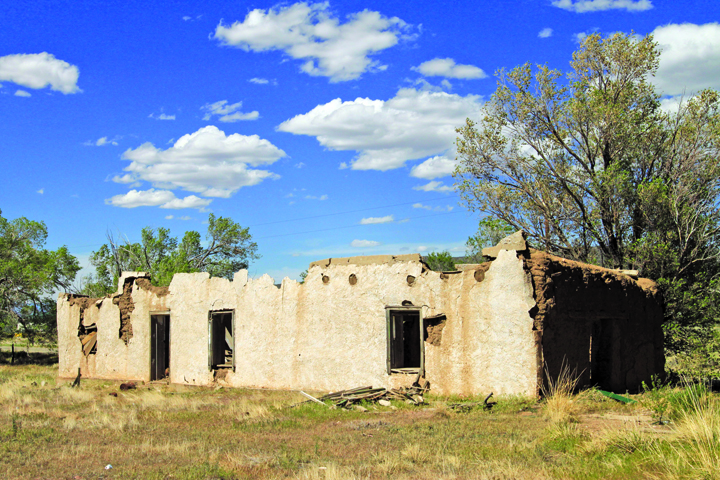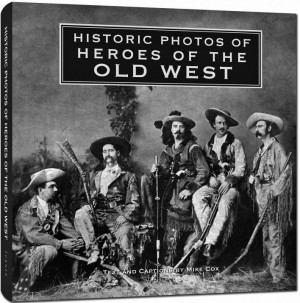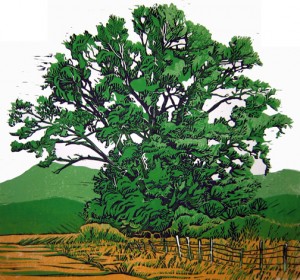By Kenneth Jessen
San Luis is the undisputed oldest occupied town in Colorado having been founded in June 1851 and subsequently incorporated. There is another community north of the Colorado-New Mexico line called Garcia. Although it pre-dates San Luis by two years, Garcia was never incorporated.

Land grants attracted Spanish-speaking settlers, and the southern end of the San Luis Valley started gaining a permanent population during the mid-1800s. There were setbacks as the Ute Indians attempted to hold on to their ancestral land. As a result, some of the colonists were driven out, only to be replaced by others. In the fall of 1849, the Manzanare, Cordova, Segura and López families moved north from New Mexico to the Sangre de Cristo Land Grant. This grant straddled the Colorado-New Mexico line, and the families settled north of Costilla.
Olibama López-Tushar explains in her excellent book, The People of El Valle, the hardships endured by these early settlers. They constructed La Plaza de los Manzanares as a defensive measure, one of many plazas established in the region. They also cut down the trees along the banks of Costilla Creek to eliminate a surprise attack by the Utes. Even then, braves would climb up on the roof of the plaza and use a long spear to reach down and snatch food as it was cooking.
The plaza took the form of a rectangle with gated openings at either end. At night, livestock was herded inside to the enclosed area. According to Virginia McConnell Simmons in her book, The San Luis Valley, La Plaza de los Manzanares distinguished itself with a flourmill. The Penitentes maintained a morada, or meeting place. The Methodists established a mission, while the Presbyterians built a church. A public school operated in the plaza from the 1870s.
[InContentAdTwo]The homes in the plaza were like multi-room apartments, with each family separated by solid walls. The doors and windows faced inward, again for protection against raids. The outer walls were extra thick, also a defensive measure. Lumber was scarce and floors were often compressed dirt swept clean and kept hard with a sprinkle of water. Outside the plaza were some individual homes, but many lived in long single-story buildings called corrilleras. Construction was similar to a plaza.
For a bit of luxury, an individual might have a patio enclosed with a four or five-foot tall wall. On their small plots of land, settlers drove poles into the ground, forming fences for gardens.
As the fear of Indian raids diminished, the entrance gates to the plaza were left open, and windows and doors were added to the outer walls. Up until the 1940s, the original plaza buildings were in good condition. With time, the structures deteriorated and were abandoned in favor of individual homes of modern construction. Today, little is left of buildings dating back to the original Plaza de Los Monzanares.
This was only one of a string of similar plazas that stretched from Costilla, New Mexico north across the Colorado-New Mexico line into Colorado. They were located along Costilla Creek and within sight of each other that the population of one could come to the aid of another.
Mail was collected south at a store in Costilla, New Mexico, and the people of the Plaza applied for a post office. According to Olibama López-Tushar, postal service was granted in 1901 with José Guillermo Garcia appointed as postmaster. He served until the following year when the post office was closed. A new application was made in 1915, and La Plaza de Los Manzanares became known as Garcia.
Today, Garcia hangs on by a slender thread as the oldest occupied settlement in Colorado. Over the last decade it has continued to lose population, and the number of abandoned buildings far exceeds those that are occupied. Historic photographs taken in the 1930s show neat, pristine buildings and today the place is littered with discarded material and collapsed structures. For the visitor it is very photogenic, and the place has the distinct feel of the old Hispanic West.
To reach Garcia, drive south from San Luis on Colorado 158 and turn west on County Road B, then south on County Road 13.2. The central part of Garcia is located at the junction of County Roads 13.2 and 13.5.
Kenneth Jessen has 18 books to his credit on a variety of Colorado topics. He is best known for his ghost town books covering the entire state. This includes the three volumes of Ghost Towns, Colorado Style and his latest work, Ghost Towns, Eastern Colorado.



